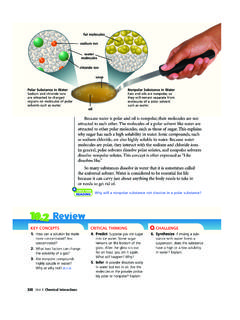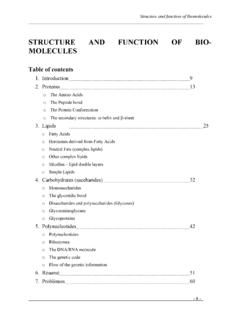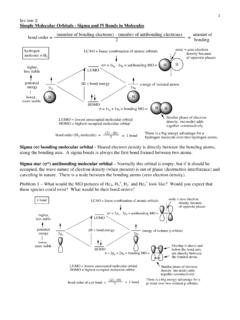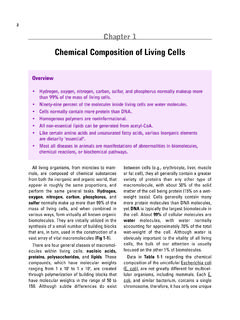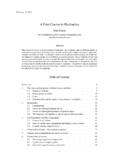Transcription of Methodology for Accurate Mass Measurement of …
1 Methodology for Accurate mass Measurement of Small molecules Best Practice Guide Co-ordinating Editors *Ken Webb, *Tony Bristow, *Mike Sargent and #Bridget Stein *LGC Limited, Teddington, UK. #EPSRC National mass Spectrometry Centre, Swansea, UK. ISBN 0-948926-22-8. LGC Limited 2004. Published by LGC Limited Methodology for Accurate mass Measurement of Small molecules Best Practice Guide November 2004. VIMMS/2004/01. Coordinating Editors: Ken Webb*, Tony Bristow*, Mike Sargent* and Bridget Stein#. * LGC Limited, Teddington, UK. # EPSRC National mass Spectrometry Centre, Swansea, UK. Preface This Guide was prepared as part of the Department of Trade and Industry's VIMMS. Programme, an initiative which formed part of the UK National Measurement System. The Guide was prepared by LGC in collaboration with members of a specially formed Working Group whose assistance is gratefully acknowledged. The members of the Working Group during the course of the work are listed below.
2 In the past the phrase Accurate mass was interpreted very broadly and covered a wide variety of mass spectrometry measurements, with varying precision. Today, most instruments used for Accurate mass measurements are capable of achieving precisions of 10. ppm or better. This Guide is concerned with application to small to medium size molecules and resulted from a review1 of Accurate mass applications which was undertaken as part of the VIMMS Programme. The review1 highlighted the recent rapid growth in the use of mass spectrometry for molecular weight determinations of small to medium sized molecules , particularly in the chemical and biochemical industries. This growth has been fuelled by a number of factors, including the rapid pace of instrument development, enabling Accurate mass and molecular weight measurements to be made in a more robust and less costly fashion. A number of experts have expressed concern that this rapid growth has resulted in unreliable data being obtained by operators who often have little experience of AccMass applications or even of mass spectrometry.
3 Discussion of the issues by experts at a forum meeting highlighted the need to prepare guidance on undertaking key aspects of the Methodology in order to obtain robust measurements and traceable data. It was emphasised, however, that preparation of such guidance should be supported by an experimental evaluation of the Methodology , including the implications of variations between type of spectrometer. Consequently, an inter- laboratory comparison2 was organised by LGC as part of the VIMMS programme to evaluate variations in Accurate mass measurements and to improve understanding of the key experimental factors in obtaining reliable data from each type of mass spectrometer. The lessons learned from this study have played a major role in shaping the advice offered in the Guide. The main aim of this document is to provide users and suppliers of AccMass instrumentation with a clear summary of the essential steps in obtaining reliable data. In addition, the reader should obtain a better understanding of the limitations of different types of spectrometer and the particular precautions which are necessary in setting up the instruments and making measurements.
4 We hope that the Guide will also facilitate an understanding of the principles of the technique and prove useful for both private study and training courses. A glossary of the terms used in this Guide has been included to assist in its use for training purposes. Mike Sargent VIMMS Programme Manager LGC. November 2004. AccMass Best Practice Guide Page i Acknowledgement The work described in this Guide was supported under contract with the Department of Trade and Industry. AccMass Best Practice Guide Page ii Members of the VIMMS Working Group Professor Gareth Brenton University of Wales Swansea Dr Tony Bristow LGC. Dr Malcolm Clench Sheffield Hallam University Dr Alex Colburn University of Warwick Dr Paul Gates University of Cambridge Mr Brian Green Micromass Dr Chris Harbach M-Scan Dr Mark Harrison Thermo Electron Dr Neville Haskins Consultant Dr Jackie Jarvis Bruker Daltonics Professor Keith Jennings Consultant Dr John Langley University of Southampton Dr Pat Langridge-Smith University of Edinburgh Dr Bill Leavens GlaxoSmithKline Dr Steve Lock Applied Biosystems Mrs Helen Lomax Applied Biosystems Dr Gwyn Lord University of London Professor Tony Mallet University of Greenwich Dr Peter Marshall GlaxoSmithKline Dr George McLeod Syngenta Professor John Monaghan University of Edinburgh Dr Mike Morris Micromass Mr George Perkins Pfizer Dr Ian Sanders Bruker Daltonics Dr Mike Sargent LGC.
5 Mr Russell Scammell Argenta Discovery Dr Jim Startin Central Science Laboratory Ms Bridget Stein EPSRC National mass Spectrometry Centre Mr Peter Watkins Thermo Finnigan Dr Ken Webb LGC. Dr John Wilkins Consultant Dr Jean-Claude Wolff GlaxoSmithKline AccMass Best Practice Guide Page iii Contents Preface i 1. Introduction 1. 2. Background 1. General Issues 1. Instrumentation 3. 3. Best Practice 4. Tuning and Peak Shape 5. Ion Abundance 5. Resolving Power 7. Calibration 8. External Calibration 8. Internal Calibration 9. Sample Introduction 9. Data Manipulation 10. Validation and Quality Control Checks 11. Selection of Elemental Formulae 11. Use of Accuracy, Precision or Uncertainty Data 11. The Nitrogen Rule 11. Rings Plus Double Bonds (R + DB) 11. Isotope Information 12. NMR and other spectroscopic methods 12. 4. Instrument Specific Guidance 13. Magnetic Sector 14. Peak Matching 14. Dynamic Voltage Scanning 14. Magnet Scanning 14. Fourier-Transform Ion Cyclotron Resonance 15.
6 Single Quadrupole and Triple Quadrupole 15. Time-of-Flight (TOF) and Quadrupole-TOF 15. 5 References 17. Glossary of Terms 19. Glossary References 23. Bibliography 24. Appendix 1: Journal Requirements for Accurate mass Data Used for Formula Confirmation 29. AccMass Best Practice Guide Page iv 1. Introduction Accurate mass Measurement of small molecules is used to determine elemental formulae. The better the accuracy the less the ambiguity3. In general, the interpretation of an Accurate mass Measurement carried out at a resolution of 10,000 (10% valley definition) is non-ambiguous up to 300 daltons (Da) when only including C, H, N and O due to the low number of potential elemental formulae. With increasing mass to charge ratio (m/z) the number of possible formulae dramatically increases making identification more and more difficult4. The increasing variety of instrumentation together with the increasing numbers of new entrants into the field of mass spectrometry has created an urgent need for clear and informative guidance.
7 FTMS currently offers the highest mass resolution of any mass spectrometer5, exceeding that of the traditional high resolution magnetic sector instruments. Though not usually considered as tools for Accurate mass Measurement , lower resolution quadrupole, triple quadrupole, quadrupole ion trap and TOF mass spectrometers have also been applied to such measurements. Accuracy of Measurement using quadrupole ion trap instruments varies with the mass and the type of ion and is generally no better than 50 ppm. Hence ion trap instruments have not been included in this guidance document. In order to produce guidance based on sound experimental knowledge, a study to evaluate a wide range of Accurate mass Measurement techniques was undertaken1. This study has enabled the editors to collate experience of the various Accurate mass Measurement techniques in a single document and to provide comprehensive advice on best practice for Accurate mass Measurement . This was followed with an inter-laboratory comparison involving a large number of expert users and was co-ordinated by LGC in 2002.
8 It should be noted that instrumentation is always developing and mass Measurement accuracy is constantly improving;. this is particularly true of TOF instruments. The inter-laboratory comparison data relates only to the instrument capabilities in 2002. The results of the inter-laboratory comparison, which involved the Accurate mass Measurement of a compound of molecular weight 475 with no interfering ions present, have recently been published2. Irrespective of instrument type and the experience of the user, the instrument must be calibrated over an appropriate mass range incorporating the mass of interest by using a suitable reference material. This primary calibration should be established where possible with traceable or authenticated materials and confirmed from time to time by measuring a reference material. A glossary of the terms used in this guide and a bibliography have been included to assist in the use of this document for training purposes. 2. Background General Issues An Accurate and precise mass Measurement increases the certainty of identification of an elemental formula.
9 If accuracy and precision ( the Measurement uncertainty) are known, these values can be used to reduce the number of candidate molecular formulae to be considered. For example, if the mass Measurement accuracy of 5 ppm ( 2 ppm precision) is routinely achieved, mass measurements to within 7 ppm should be considered in the initial data AccMass Best Practice Guide Page 1. evaluation, rather than the top 10 or 20 hits from the results table, which is the more usual approach. This is particularly important for determining the elemental formula of a complete unknown. Each type of analyser will have unique parameters that will contribute to the overall uncertainty of the Accurate mass Measurement . Very little work has been carried out on this subject but some initial work has been described6,7. Although not fully described here, guidance to the general concept and principles of Measurement uncertainty is available8. It is important to understand the degree of accuracy required relative to the m/z of the ion that is measured.
10 Setting fixed acceptable error limits for exact molecular mass Measurement is not recommended4. With increasing m/z the number of formulae which will fit a measured molecular mass increases until an unambiguous result becomes impossible to obtain and this is illustrated in Figure 19. 150. Number of Formulae (C,H,N,O). 120. 90. 300 Da 600 Da 60. 1000 Da 30. 0. 0 1 2 3 4 5. mass Accuracy (ppm). Figure 1: The effect of mass accuracy and molecular weight on the number of potential elemental formulae (source: Quenzer, T. L. et ). It is also important to distinguish between the integer mass of the nominal mass ion, the calculated exact mass and the average mass . Table 1 below illustrates the different numerical values resulting from these definitions10 for several molecules . AccMass Best Practice Guide Page 2. Table 1: The distinction between common definitions of molecular mass (uncharged species). Molecular mass (See Glossary for Formula definition of terms). Nominal Exact Average Sulphamethazine C12H14N4O2S 278 Ketaconazole C26H28Cl2N4O4 530 Ubiquitin C378H630N105O118S 8556 Sulphamethazine has an average mass of , a nominal mass of 278 and a calculated exact monoisotopic mass of Ketaconazole contains two chlorine atoms; the nominal mass ion contains two 35Cl atoms whereas the mass of the average mass ion is calculated using the natural abundance ratio of the 35Cl and 37Cl atoms.
